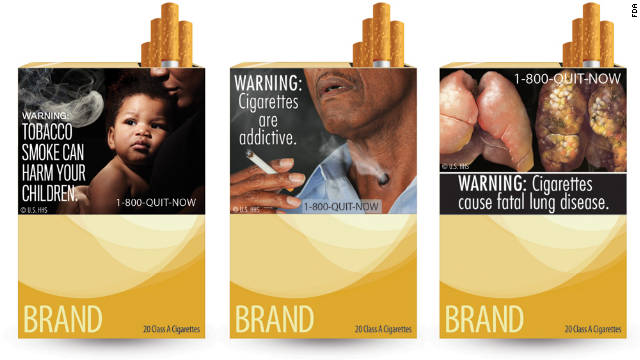Study: Cigarette warning labels with pictures more effective

It’s not enough to tell young adults about the dangers of smoking; they need to see the damaging effects of smoking, as well.
A new study by a Washington State University Vancouver psychologist found that young adults are more likely to heed the warnings on cigarette labels if the words are accompanied by graphic images.
A growing body of evidence supports the effectiveness of graphic warnings in motivating smokers to quit, according to a WSUV news release. The images may show people dying in hospital beds, facial scars, rotting teeth and diseased body parts.
But less research has been done to show how much individuals actually learn from the graphic labels. Renee Magnan, an assistant professor of psychology at WSUV, sought to find an answer.
“Our outcomes suggest that focusing on enhancing understanding and knowledge from smoking warning labels that convey true consequences of smoking may not only influence motivation directly — both in terms of quitting and prevention of smoking — but may actually drive the emotional experience of the label, which we know is an important predictor of motivation,” Magnan said in the news release.
In the study, smoking and nonsmoking people ages 18 to 25 took an online survey asking how much they learned about the dangers of smoking from cigarette warning labels.
The labels emphasized the negative consequences of smoking associated with lung cancer, heart disease, stroke, impotence, eye disease, vascular disease and neck, throat and mouth cancers.
Study participants rated each label on understandability, knowledge gained, discouragement from smoking and the label’s ability to evoke worry.
Overwhelmingly, participants reported that the combination of images and text provided significantly better understanding, more new knowledge, aroused more worry and discouraged smoking more than the text-only labels, according to the news release.
“Although this is a preliminary investigation, from a policy perspective, these outcomes suggest that focusing on deriving greater understanding and knowledge from such labels may have more impact in terms of both motivational and emotional responses,” Magnan said in the news release. “However, these labels are only a small piece of what should be a larger campaign to educate the public on the dangers of smoking.”
